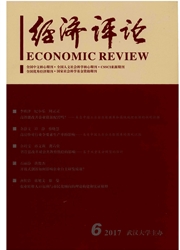

 中文摘要:
中文摘要:
基于2005—2007年全国工业企业微观数据,本文运用倾向得分匹配方法(PSM)考察了有研发投入行为的企业与其“反事实情形”下未实施研发状态下的全要素生产率差异,发现研发投入对企业全要素生产率的溢出效应约为16.5%,明显低于OLS估计结果(66.0%)。在增加更多的匹配变量,分组、逐年、分所有制、分地区的稳健性检验结果也均证明,研发投入对企业全要素生产率表现出明显的激励作用,其中高新技术行业、国有企业和港澳台企业的研发溢出效应最为突出,东部地区企业研发溢出效应显著高于中西部地区。其政策含义是,应着力营造自主创新的有利环境,鼓励中西部地区与东部创新地区合作,进行优势互补;利用国有大中型企业的规模优势,推动重大科技创新,同时发挥好非公经济的创新活力。
 英文摘要:
英文摘要:
Based on industrial enterprises data of China during 2005 -2007,the method of propensity score matching(PSM) is adopted to analyze the difference of total factor productivity(TFP) between the enterprise of R&D input and its counterfactual status. The results show that spillover effect on TFP is at least 66.0% using OLS method,but about 16.5% using PSM. After introducing more controlled covariates,investigating by group,year by year,province by province and by ownership types,we all find significant spillover effects on TFP. Among them, hightech industry, state -owned enterprises, and Hong Kong, Macao and Taiwan enterprises have the most prominent spillover effects. And the spillover effect is more significant in enterprises in the eastern area. The policy implication of this paper is that we should strive to create a favorable environment for self- innovation and encourage the cooperation and complementary advantages among the areas. Using the scale advantages of large and medium - sized state - owned enterprises, the great technological innovation will be promoted,and innovational energy of the non -public sector will also be inspired.
 同期刊论文项目
同期刊论文项目
 同项目期刊论文
同项目期刊论文
 期刊信息
期刊信息
